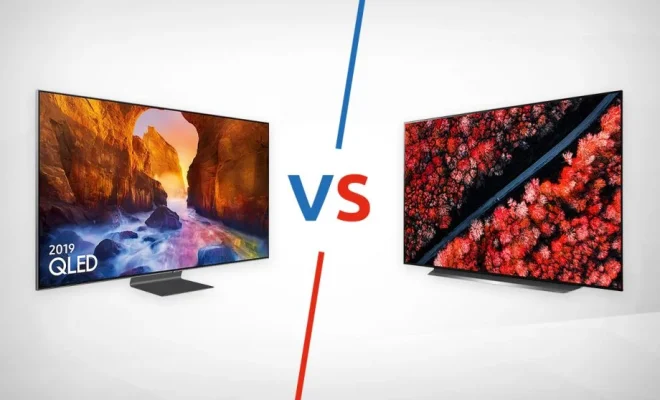QLED vs. LED vs. OLED: What Is the Difference?

When it comes to buying a new TV, there are a lot of options on the market. One of the most important decisions is choosing between QLED, LED, and OLED technology. These three types of TVs vary in their display capabilities and features, with each having its own strengths and weaknesses. Let’s take a closer look at what distinguishes each one.
LED TVs
LED TVs are often the most affordable option on the market. They use LED backlighting to create the picture on the screen. These TVs are known for their decent brightness and vibrant colors, making them a good choice for a well-lit living room. However, there are some drawbacks to consider. LED displays struggle with black levels, meaning they don’t offer a true black color as the light behind the display is always on.
QLED TVs
QLED TVs, or Quantum LED, are an upgraded version of LED technology. They feature quantum dots that help to produce a more accurate color display. These TVs have a wider color gamut and are better known for their brightness than LED displays.
While QLEDs share a similar name to OLEDs, they do not use the same technology. They still rely on LED backlights for display. QLEDs also struggle with black levels, so the images may look washed out or discolored in certain lighting environments.
OLED TVs
OLED TVs use Organic Light Emitting Diodes to create the screen image. They do not need a backlight as the pixels themselves produce light. This enables them to create true black levels and vibrant colors, making for a more immersive and vivid viewing experience. OLED is often considered the highest quality display technology available, but it comes at a cost. OLED displays are more expensive than LED or QLED TVs.
One downside of OLED technology is potential burn-in. If an image is left on screen for too long, it can burn permanently onto the display. Therefore, OLED TVs may not be the best choice for gamers or users who leave their TVs on for extended periods.
So, what is the difference? Overall, LED TVs offer an affordable option for those who aren’t looking for a high-end display. QLEDs are great for bright rooms but still struggle with dark imagery. OLEDs provide an incredible picture, but at a higher price.





